
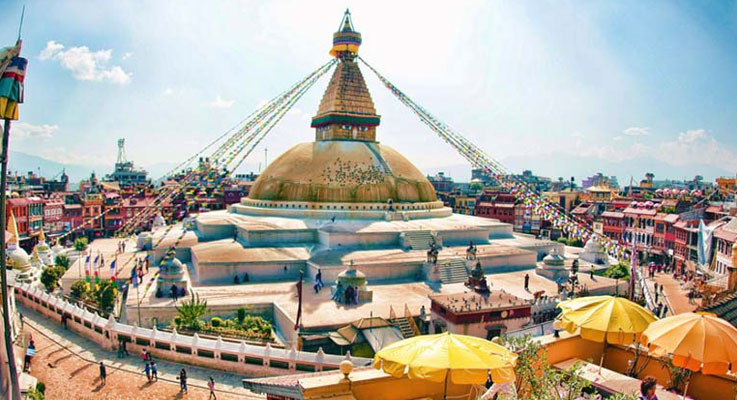
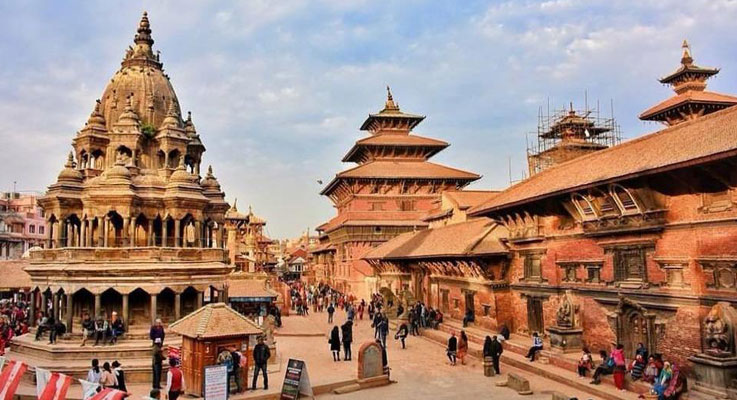
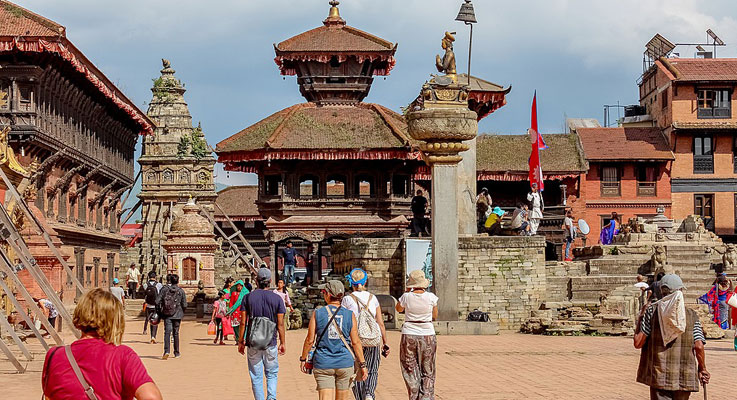
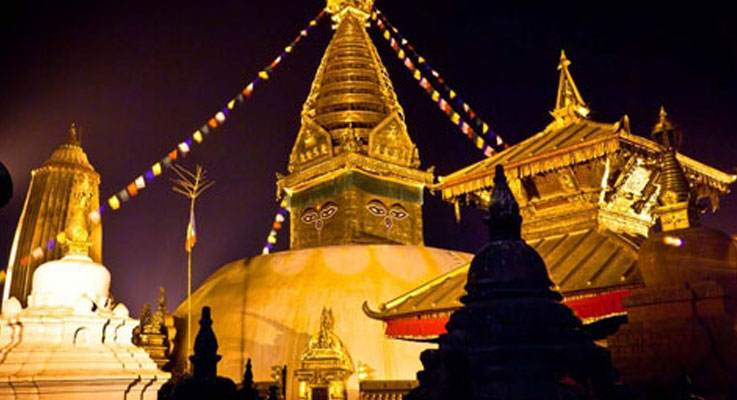
tour of kathmandu valley
-
-

-
Duration
6 days
-
-
-

-
Group
16 Pax
-
-
-

-
Difficulty
Easy
-
-
-

-
Accommodation
Hotel / Lodge
-
-
-

-
Season
All Season
-
Kathmandu, the mystical and magical city, is famous for its bustling streets, vibrant culture, rich historical heritage, exquisite temples and religious sites. The sightseeing tour will give you an insight about the lifestyle of the people of this ancient city. Though the city is a valley, the views of many Himalayan gems like Langtanag and Ganesh can be clearly seen from here. For nature lovers, hiking the Shivapuri National Park and then to the legendary hilltop of Nagarkot just off the edge of the city is a great option to explore the marvelous forest and trails filled with flora and fauna. Don't forget to get hold of handcrafted souvenirs which Nepal is globally known for!
Itinerary
-
Day 1
Arrival in Kathmandu (1,345m/4,413 ft)
Upon arriving at at Tribhuwan International Airport in Kathmandu, you will be received by our airport representatives who will warmly greet you and transfer to the hotel on a private tourist vehicle. We provide 3-star accommodation in the city and we arrange for a trip briefing with dinner in the evening.
-
Day 2
Visit old town of Kathmandu
A professional guide and vehicle are provided for a day of sightseeing in and around Kathmandu city. We visit some of the UNESCO World Heritage Sites in the city along with other interesting cultural monuments that dot the valley. These include Boudhanath Stupa (the largest Buddhist shrines in the world), Pashupatinath (the holiest Hindu temple in the world), Durbar Squares (Palaces and fortresses of medieval Kings), along with other popular cultural attractions. We get to observe the lifestyle of Nepalese people, holy sadhus and monks, fascinating history as well as awe-inspiring architecture. Details of some of the sites we'll be visiting:
Kathmandu Durbar Square (World Heritage Site)
This complex of palaces, courtyards and temples, built between the 12th and 18th centuries, used to be the seat of the ancient Malla kings of Kathmandu. An intriguing piece here is the 17th- century stone inscription set into the wall of the palace with writings in 15 languages. The Durbar Square is the social, religious and urban focal point of the city. There are also three museums inside the palace building.
Swoyambhunath Stupa - The Monkey Temple (World Heritage Site)
Watches over the valley from the top of a hillock on its western side. The huge stupa is one of the holiest Buddhists sites in Nepal and its establishment is linked to the creation of the Kathmandu Valley out of a primordial lake. Swayambhu is also known as Samhengu and the Monkey temple because of the countless monkeys living in the premises.
Pashupatinath Temple (World Heritage Site)
Pashupatinath is one of the most sacred Hindu shrines in the world and lies 5 kms east of the city center. The richly-ornamented pagoda houses the sacred Linga, or phallic symbol, of Lord Shiva. Chronicles indicate the temple's existence prior to 400 AD. Devotees can be seen taking ritual dips in the holy Bagmati River flowing beside the temple.
-
Day 4
Guided sightseeing at Boudhanath Stupa, Changunarayan Temple and an evening drive to Nagarkot
We'll spend this day on a guided sightseeing tour in the valley, and in the evening, we'll head to Nagarkot (a 1-hour drive from Kathmandu). The places we visit are:
Bouddhanath Stupa (World Heritage Site)
Lies about 6 kms to the east of downtown Kathmandu and is the largest stupa in the valley. It looms 36 meters high and presents one of the most fascinating specimens of stupa design. Buddhanath is also known as Khasti, or dew drops, after an account that builders had to use dew to mix the mortar as Kathmandu was suffering from a severe drought during the construction of Bouddhanath.
Changunarayan Temple (World Heritage Site)
Situated on a ridge overlooking the Kathmandu valley, about 12 km to the east of the city. It is dedicated to the Hindu God Vishnu. It is one of the finest and oldest specimens of pagoda architecture built in 323 AD by King Haridutta Verma. The temple is richly decorated with sculptures and carvings, and its position above the Kathmandu valley affords a beautiful view of the surrounding countryside.
Nagarkot
Nagarkot is one of the most scenic spots situated about 35 km east of Kathmandu from where an excellent view of snow-capped peaks of the Himalayan Ranges in eastern Nepal can be seen (weather permitting). The place is also renowned for spectacular sunrise sights. There are also some great hiking trails in Nagarkot.
-
Day 5
Bhaktapur Durbar Square sightseeing. Return to Kathmandu for farewell dinner in the evening
Bhaktpur Durbar Square (Bhadgaon)
We'll wake up very early in the morning to watch the stunning sunrise from Nagarkot, which the place is most renowned for. We will return to Kathmandu around noon and do some sightseeing in Bhaktapur Durbar Square, a collection of pagoda and shikhara-style temples grouped around a 55-window palace of brick and wood. The attraction of the Bhaktapur Durbar Square is the Lion Gate, the Golden Gate, the 55-window palace, art galleries and the statue of King Bhupatindra Malla. After driving back to Kathmandu, there will be a farewell dinner for you in the evening in a typical Nepalese restaurant with cultural dance and music.
You have the option to extend your trip to continue onto Chitwan jungle safari, rafting adventure, Kathmandu valley shopping tour, scenic Everest flight, mountain biking and other activities.
-
Day 6
Departure from Nepal
The trip concludes today. You will be dropped at Kathmandu's Tribhuwan International Airport by our airport representative for your flight departure from Nepal.
Map
What's included
Price Details
Please enquire with us for prices
Price Includes
- - All ground transportation by private vehicle for airport and hotel pick up/drop off, sightseeing and transfers
- - All domestic flights (if any)
- - Accommodation in teahouses and hotels
- - All meals during trek
- - Entry permit to parks, monuments and cultural landmarks
- - Trekking guide(s), porter(s) and driver(s) their daily wages, food, accommodation and other expenses
- - Comprehensive medical kit
- - In case of emergency, we can send helicopters for evacuation, manage all paperwork, and deal with related insurance companies (provided the client has valid insurance)
Not included
Price Excludes
- - International airfare and airport departure tax
- - Travel insurance covering medical treatment and evacuation by ground and air
- - Nepal entry visa, obtained upon arrival at the Tribhuwan International Airport in Kathmandu
- - Rescue and evacuation
- - Extra road transport/flight cost in case member returns earlier
- - Lunch and dinner in Kathmandu and if applicable, in Pokhara
- - Items of personal nature like laundry, communication and bar bill
- - Tips for trip staff and driver. (Tipping is appreciated)
- - Other expenses not mentioned in the Price Includes section
Life on Trek
Trekking staff
Whilst on the trek, the Nepali guides and porters will ensure that you are well looked after. Every trek has an English speaking guide, known as the Sirdar, who is in overall charge. It is his responsibility to organize the trek en route and manage the guides and porters and deal with the local peoples and they are experts in trek organization, as well as being able to discuss the local culture, religion, and landscape. In addition there will be other guides, sometimes referred to by the generic term Sherpa, who will be your walking companions on the trek and will assist the Sirdar in organizing the logistic of the trek. On camping treks there will be full kitchen crew who are responsible for all aspects of catering. And finally there will be porters who are the transportation system of the Nepali mountains. They will carry the duffle bags and other equipment as necessary.
Accommodation
- Fully equipped Camping treks - accommodation is provided in spacious 2 person tents. We use this method for our climbing trips and some treks where lodges are less frequent.
- Lodge trek - accommodation is provided in the local Nepali lodges, some times known as tea- houses. It is usually necessary to share a double room. We use this method for our treks in the Annapurna and Everest regions.
Food
On camping treks, all food is prepared by the trek cook - an expert in preparing delicious camp food. And most importantly, special care is taken to provide well - boiled, purified drinking water. On lodge treks, food is provided in the lodge and this ranges from delicious local specialties to common western dishes. If necessary, bottled water can be purchased from the lodges for a small fee, although many trekkers prefer to use fresh water with the added precaution of a purifying agent. You could bring some Chocolate or special energy drinks for yourself as these are hard to get in the Himalayas.
A typical trekking day
A typical day revolves around the Nepal sunrise and sunset. The day starts with an early wake up call. You then pack up your gear and enjoy a rousing breakfast before starting your morning's walk. The Sirdar will already be organized loads to porters and or animals, and your group will then set off on the trail at a leisurely pace, enjoying the view and stopping to take photographs. After 2-3 hours walk you stop for lunch. This lasts for about 90 minutes which gives you time to relax, or explore the local village. The afternoon's walk is usually shorter and we arrive at the campsite or tea-house in plenty of time to relax and savour the surroundings. Later in the evening dinner is served, giving you an opportunity to sample the delicious food, talk over the day's events, and look forward to another special day on the trails of Nepal.
Health and safety on the trek General
- A comprehensive first aid kit is carried on the trek. However we advise that you also carry your personal first aid kit which includes specific items of preference.
- We will, in an emergency, arrange for helicopter evacuation. (Note that you are required to hold insurance for this unlikely eventuality).
- All meals on our camping trips are prepared to strict hygiene standards specifically for our groups, under the supervision of the trekking staff.
- We use tea-houses that we now have strict hygiene standards and provide a broad menu.
High Altitude
Anyone can be affected by Altitude Sickness. However, our itineraries are specifically designed to minimize the risks associated with trekking to high altitudes by building in acclimatization and rest days. In the event of any symptoms we will ensure that the individual descends to a lower altitude to gain a quick recovery.
And finally……….. It must be stressed that whilst trekking in the Nepal Himalaya is challenging and rewarding, you must be prepared for he occasional inconvenience or discomfort. The correct mental attitude to trekking is as important as being physically prepared.
Equipments
All equipment and food, and your own personal backpacks are carried by the porters or pack animals. It is only necessary to carry a camera or small daypack ! On camping treks all necessary camp equipment is provided - this includes dining tent, dining table and chairs, toilet tent, foam mattresses, and all cooking equipment. The only kit that you will need to bring is your own personal equipment and clothing.
Recommended Trekking Kit
The following is a list of clothing and accessories that we recommend that you take with you. This is not intended to be a comprehensive clothing and equipment list, rather it is intended to act as a reminder of those items that we feel are essential for your comfort and convenience. However we recognize that you may have your own personal preferences for clothing which may be equally as suitable.
Footwear
- Walking boots with suitable ankle support that have been worn - in prior to the trek, and which are waterproof.
- Trainer or casual shoes, for trekking andor for traveling
- Warm socks for colder areas.
- Gaiters ,,in case of rain or snow.
Leg wear
- Loose, casual trousers for trekking.
- Thermal leggings for colder areas.
- Long skirt for women as an alternative to trousers
- Waterproof trousers
Body
- Selection of T-shirts, and long sleeved shirts, preferably not cotton.
- Thermal shirt for colder areas.
- Warm shirt, possibly fleece, for colder areas.
- Fleece jacket or warm wool jumper.
- Windproof, waterproof outer shell garment for higher altitudes.
- Down jacket (optional for cold nights & mornings: can be hired in Kathmandu cheaply)
Head Hands
- Wool or fleece hat, or balaclava.
- Hat or cap for sun protection while trekking.
- Sunglasses or goggles.
- Sunscreen lotion and lip balm
- Warm gloves.
Other Items
- Strong rucksack, or large holdall to be carried by porters
- Day sack to be carried personally.
- Plastic bags or stuff sacks to storeseparate trekking gear inside your main bag.
- One liter water bottle.
- Personal first aid kit to include essential items.
- Sleeping bag 4 season.
- Torch, ideally head torch.
- Camera and film! - for those not to be forgotten shots of the Himalaya.
- Toilet items and towel.
- Large handkerchief bandana for neck.
Recommended Mountaineering Kit
In additional to the items mentioned above for trekking the following is a list of the additional specialist items which are required for the trekking peaks.
- Plastic or Leather mountaineering boots, with gaitors & crampons that have been tested for a good fit.
- Fleece trousers or salopettes.
- Additional mitts and gloves suitable for climbing.
- Ice ace, and ski poles (Note: ice axe can hired in Kathmandu)
- Climbing harness
- 2 X tape slings
- 2 X screw gate karabiners.
- Descended abseil device Ascender
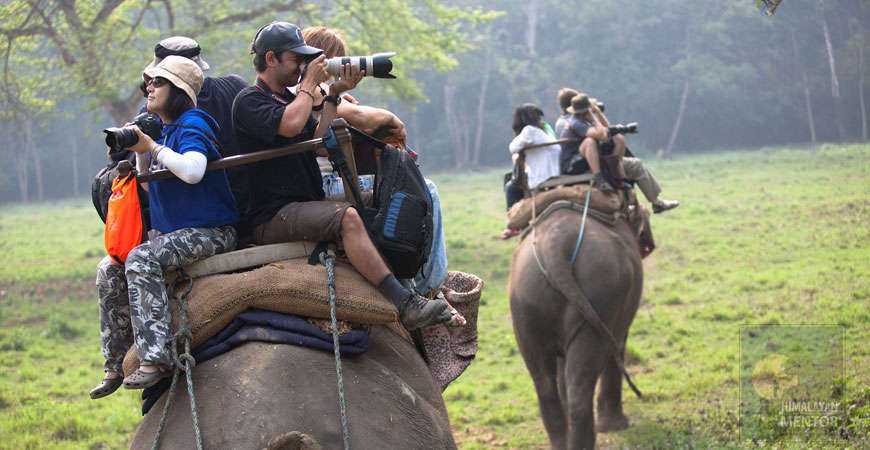
 9 days
9 days
 Easy
Easy
